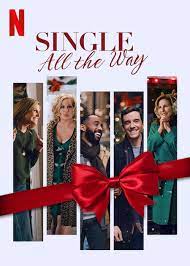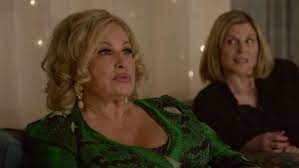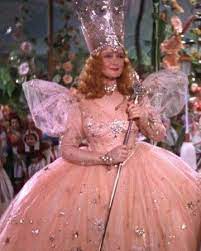I’m fifty-seven. This week I finally became an adult.
Always was a late bloomer.
For the most part, I’ve been acting like someone beyond adolescence for a few decades now, but there was always one realm where I was thirty going on thirteen and, eventually, fifty-seven going on thirteen. Even teen me knows that’s messed up growth.
I’m often told I look young for my age[1] but, to be clear, I don’t resemble an adolescent. Those whiskers that sprout when I can’t be bothered shaving are decidedly gray. TikTok is still the sound of an old-fashioned grandfather’s clock. I haven’t had the urge to get drunk just because it’s Friday night since…well, that’s never been an urge on any night or day. In some ways, I was an old soul even when I was a teen.
Despite my age, I can still be childish. Sometimes I think it’s a good thing, like when I can’t stop peeking out the window to see if the forecast might come true and snow may fall. (It came this week! I raced outside to play, desperate to jump and spin like the dogs who seemed to think snow was almost as nifty as the chewed-up tennis ball that, sadly, rolled behind the fridge two weeks ago and has yet to be rescued or replaced.) I still think “Rudolph the Red-nosed Reindeer” is the best show in the whole wide world and I wouldn’t hesitate to do a cannonball off the cottage dock if my sister were lying there getting some sun.[2]
Ah, family. That’s where the bad side of adolescence can pop up. There’ve been other domains that have induced immaturity, but I’ve been able to walk away from them.
The silver lining in never having children—something I always wanted—is that I don’t have an ex whom I have to continue communicating with to discuss and inevitably disagree on parenting issues and, somewhere down the line, meeting later in life for our child’s wedding, posing awkwardly in one of those family shots with the weary photography shouting, “Smile! Look happy! Cheese! Ricotta, Parmigiano Reggiano and all that!”
With exes, I can choose which ones to maintain a relationship with and which ones to relegate to the category, Things I’m Glad Are in the Past. Yes, that’s you, John, last known to be in Phoenix. You may join Cabbage Patch Kids, the Reagan years and debates over Debbie Gibson versus Tiffany. (Why couldn’t I like both?)[3]
Unfortunately, I can’t put my family in the past. I’ve put an international border between us, but the ties remain, however tenuous. I know I’m not the only one who still gets triggered when interacting with parents. I immediately regret my behavior after the conversation. Sometimes I feel it in the moment. Why am I acting so petulant, so juvenile? Why can’t I stop it?
Thirteen again. The fact that this round comes without zits is no consolation.
Not being a parent, I don’t fully know the process, but I suspect that, in the moments after a child is born, there are two official documents that are drawn up. Of course, there’s the birth certificate, one that is officially passed on to the child when the parents deem him responsible enough to hold onto it. (I took possession of mine just before I turned thirty. Such a big boy!) I can’t confirm it, but I’m pretty sure there’s a more secretive second paper given to members of Club Parent. I picture it as pearl white card stock with gold lettering, a lifelong permit:
Having successfully participated in Lamaze classes, given birth to a baby and committed to painting the nursery in gender-stereotyped hues, you hereby have full permission to push said baby’s buttons, at will, in perpetuity.
Some parents, such as mine, treat this permit with particular reverence. They misread “permission” as “obligation.” It doesn’t show up on any X-ray, but I think I was born with an excess of buttons. The triggers are different from that period in the last century when we all lived under the same roof and I spent most of my time holed up in my room, showing my rebelliousness by cranking up Donna Summer and Air Supply. But there’s always new material.
“Going to church might do you some good, you know.”
“You have to be nice to me. I’ll be dead soon.”
“Texas has COVID totally under control. What’s wrong with Canada?”
Almost all triggers are pulled by my mother. That’s because I only talk to my father when the calendar obligates a phone call, mercifully spaced six months apart: Father’s Day and his birthday which happens to be Christmas Eve.
I’m officially declaring myself a full-fledged adult this week after navigating the birthday call with exemplary social skills. It’s been a few days and I can’t recall a single thing we said to each other but therein lies the proof. No huffing, no puffing, no churlish sigh, no statement or action/reaction akin to a cathartic door slam, followed by me cranking up “Bad Girls.”[4]
We talked just like two people who really don’t know each other all that well, like I might talk to Wally in accounting while queued for the eggnog bowl at the office Christmas party. (Tipsy Tracey is a tad shaky with the ladle.) The subjects were safe—that, in and of itself, is a sign of wisdom that comes with age—the tone unwaveringly cordial.
My mother is who she is. My father is who he is. I’ve stopped trying to point out how they’re wrong…about politics, about the fact that depression doesn’t go away by smiling more, about how tricky it really is to get my unpublished manuscript on Oprah’s Book Club list. (Wouldn’t it be nice if my mother were actually correct on that last point!)
My mother will continue to land a half dozen once-maddening, naïve and/or condescending “You should…” or “Why don’t you just…” pokes in every conversation and my father may still drop a shockingly intolerant bomb or two, but part of getting past my teens is that I don’t have to work so hard at establishing my independent identity (i.e., “I’m nothing like you!”) when I’m baited. I’ve realized that, by now, it goes without saying. I am who I am, too.
So there it is. Goodbye to thirteen. Now I’ll stick with pretending I’m fifty-seven going on thirty-five. If I cover the mirrors, I can still find a make-believe world in adulthood.
[1] It’s happening so much less though. I’m holding onto a comment from a doctor I met with in the fall who was startled by my age and said I looked twenty years younger. Yes! But then, we were the same age and, well, I thought he looked twenty years older. Of course, I kept my mouth shut. I didn’t want him telling me I was going to die…and not on account of some underlying disease.
[2] She wouldn’t appreciate it—which would be the whole point—but skin cancer runs in the family. I would tell her it was an act of kindness.
[3] Force me to choose and it’s Debbie. She had me at “Only in My Dreams” and hasn’t been able to shake my love since. Aw, Tiffany…what Could’ve Been.
[4] Donna’s “beep beep” is way more satisfying than The Roadrunner’s, right?



























